
⛷️ Good morning! Kathryn is just back from a much-deserved vacation and will return to the Weekly next week.
Meanwhile, gather ’round! We need to talk about hydrogen.
In theory, hydrogen sounds like a miracle fuel. Split water molecules with clean power, use the hydrogen to fuel everything from trucks to steelmaking, boom: endless clean energy. Doesn’t that sound nice?
Reality, of course, is never that simple, and with all the news about hydrogen hubs and the rainbow of green vs. blue vs. pink and so on, it’s easy to get lost.
But if you only have the bandwidth for one hydrogen story right now, it should be the debate over a tax credit called 45V, that could have major implications for future emissions.
As reporter Kari Lydersen explained in a story earlier this month, draft rules for the 45V tax credit require “green” hydrogen to be produced by new, adjacent renewable energy to qualify, much like the illustration above.
But promoters of hydrogen hubs, which energy writer David Roberts has dismissively dubbed “subsidy-farming machines,” sent a letter Monday urging the Treasury Department to allow green hydrogen produced from existing renewable energy to qualify, arguing the proposed rules are so strict they’ll be unable to bring productions costs down quickly enough to meet federal goals.
Earthjustice attorney Lauren Piette calls that a “loophole” that will simply divert existing clean energy capacity that would then be backfilled by coal and gas generation, potentially causing a net increase in emissions and spiking utility bills.
Beyond grid implications, advocates are also warning of other unintended climate consequences if hydrogen is not used or handled carefully — potentially creating more heat-trapping emissions than burning natural gas.
🚘 Something we can agree on: While policies to phase out gasoline cars have become politically polarized, a study finds electric vehicles are popular with Democrats and Republicans alike. (CNN)
🌊 A milestone for offshore wind: Vineyard Wind last week became the first large-scale offshore wind farm in the U.S. to begin delivering power, a step Massachusetts Gov. Maura Healey calls “a turning point in the clean energy transition.” (Associated Press)
🏡 Building tension: Policies to improve energy efficiency in housing have faced strong opposition from builders associations, who frequently deploy inflated cost estimates to fight code upgrades. (Washington Post)
✅ Just in case: Federal regulators are scrambling to implement policies to cut heat-trapping emissions and meet U.S. climate obligations in case the White House changes hands after the 2024 election. (Bloomberg)
💡 Looking to the future: State and local governments are preparing applications for a $5 billion federal grant program to implement big ideas in climate action plans. (Energy News Network)
🏢 Greener cities: A Chicago environmental justice organization is helping to build out a geothermal heating and cooling network on the city’s South Side. (Grist)
👷 Learning from history: A new weatherization jobs resource hub in Wisconsin is part of advocates’ effort to avoid the boom-and-bust cycle that followed previous increases in federal energy efficiency funding. (Energy News Network)
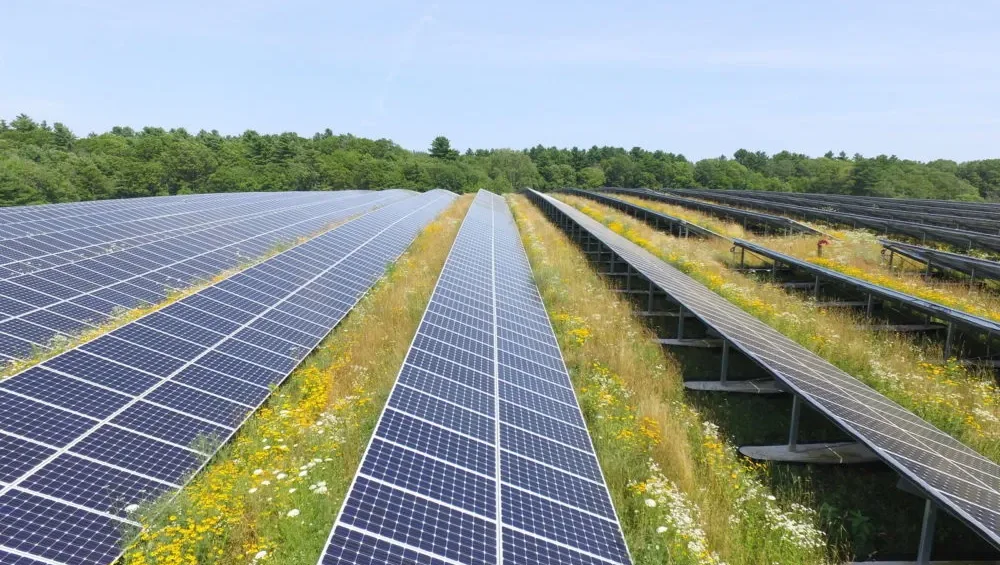
Climate advocates, public officials, and the solar industry are asking Massachusetts to update its solar incentive program to reignite slowing growth in the sector while making the system fairer and more effective.
The Solar Massachusetts Renewable Target (SMART) program hit its fifth anniversary in late 2023, and the state has launched a review to determine how to adapt the system to current economic realities and environmental priorities. While most agree it has been an effective system for supporting the growth of solar, stakeholders would also like to see changes that would better respond to fluctuating market conditions and encourage development on the most suitable sites.
These recommendations come at a time when the Massachusetts solar industry is losing some momentum, despite the incentives the state provides. The state’s clean energy and climate plan estimates Massachusetts will need some 27 gigawatts of solar capacity by 2050 to meet the goal of going carbon neutral by that year. But current development is not keeping pace. In 2021, the state’s new solar installations topped 600 megawatts, according to data from the Solar Energy Industries Association. In 2022 and 2023, installations dropped to roughly half that level.
“SMART has done a good job of continuing the deployment of solar in the commonwealth and there are a number of really good components to it,” said Mark Sylvia, chief of staff at Blue Wave Solar. “Now we’re at an important inflection point.”
SMART works by paying the owners of solar installations a set rate per kilowatt-hour of power they produce. The base rate is determined by the project’s size and location; so-called “adders” increase the rate for projects that serve low-income households, are located on rooftops, or have other features the state wants to encourage. The system was designed on the assumption that the cost of building solar would keep dropping as demand grew, reducing the need for subsidies. Thus, SMART rates get lower as more solar capacity is built.
Many stakeholders have raised concerns about continuing this declining rate model. In recent years, costs have not continued falling as expected. Instead, supply chain problems during the COVID pandemic and changes to steel tariffs drove up equipment prices. Costs to interconnect to the grid and to acquire land for solar developments have risen as well.
Industry players and environmental advocates have suggested replacing the declining rate approach with a mechanism that would adjust rates according to market conditions once or twice a year.
“There’s this across-the-board issue around SMART rates being lower than they need to be to drive the market,” said Nick D’Arbeloff, president of the Solar Energy Business Association of New England. “SMART as a whole has to rethink how it can better incent projects.”
Additional rate adjustments could also be used to push specific policy priorities more effectively, said many.
Several pointed to the issue of solar canopies, panels mounted high enough above the ground to provide shade and shelter from rain, usually in parking lots. A report released by the state in July found that the state’s parking lots had the technical potential to support some 14 gigawatts of capacity on solar canopies. However, material and equipment costs make building canopies particularly pricey right now.
SMART already includes an adder for canopies of 6 cents per kilowatt-hour, but it isn’t enough to cover the additional costs. Strategically increasing the adder would make canopies more financially feasible and could help capture some of the untapped potential parking lots offer, supporters said.
Tweaks to the program could also help more low-income households realize the financial and environmental advantages of solar power, said Ben Underwood, co-chief executive and co-founder of Resonant Energy, a Boston-based solar development company focused on projects that benefit low-income communities.
The program currently incentivizes these developments in a few ways. It offers adders for projects on low-income properties and for community solar facilities that allocate more than half of their production to low-income customers, and provides higher base rates for projects smaller than 25 kilowatts on low-income households.
However, these nudges have had little effect so far. Just 4% of the small systems using SMART qualify for the low-income base rate, though Underwood estimates roughly one-third of Massachusetts households could qualify.
“The rates are not leading to adoption in a way that’s proportionate,” he said.
To jumpstart more development in this sector, Underwood would like to see the compensation rates for low-income projects returned to at least their original starting points — between 35 cents and 39 cents per kilowatt-hour, depending on utility — and be exempted from decreases over time.
“There’s really not a risk of having deployment be too fast at this point, so long as sufficient consumer protections are in place, because there’s so much ground that needs to be made up,” he said.
As interest in solar has expanded, siting has been an ongoing controversy in Massachusetts. Some advocates object to the use of previously undeveloped lands for solar projects, arguing that cutting down trees and disturbing habitats for the sake of renewable energy does more harm than good. Others contend that the state’s ambitious solar goals can’t be reached without using at least some so-called “greenfields.”
“It is the industry’s belief that we’re going to have a very hard time reaching the goals Massachusetts has set for itself if we suddenly cease using available land for solar,” D’Arbeloff said.
Many commenters have suggested there are ways to bridge this divide.
The current rules subtract a fraction of a cent per kilowatt-hour from the compensation rate for projects on greenfield land. However, the state should also consider looking more carefully at the parcels included in this definition, said Jessica Robertson, director of policy and business development for New England at solar developer New Leaf Energy.
Now, a large parcel might be subject to the lower rate even though only a small portion of the land within it is considered unsuitable for development. In other cases the data used to classify the land is very out-of-date. Robertson pointed to one case in which a piece of land occupied by a gravel pit was classified as agricultural using soil samples from decades prior. She would like to see a process that more easily allows for the assessment of individual parcels as they are proposed for potential development, rather than just relying on existing lists.
“The regulations in the last round painted with a very broad brush,” she said. “We hope that the next round will take that more nuanced approach.”
The Nature Conservancy proposes a zoning system that would code potential sites as green, yellow, or red, depending on their suitability for development and the potential for negative environmental impact. Mass Audubon suggests eliminating support for solar projects on land identified as high-biodiversity, while boosting or creating funds for development on landfills, residential and commercial rooftops, and parking lots.
The state closed its public comment period on February 9, and will now develop a straw proposal incorporating the feedback it received. While the details are yet unknown, there is wide agreement among stakeholders that the Healey administration is serious about supporting solar.
“She has chosen a veritable dream team to manage energy for the commonwealth, and I am confident they are going to find their way forward to some good solid solutions,” D’Arbeloff said. “But it is complicated and challenging.”
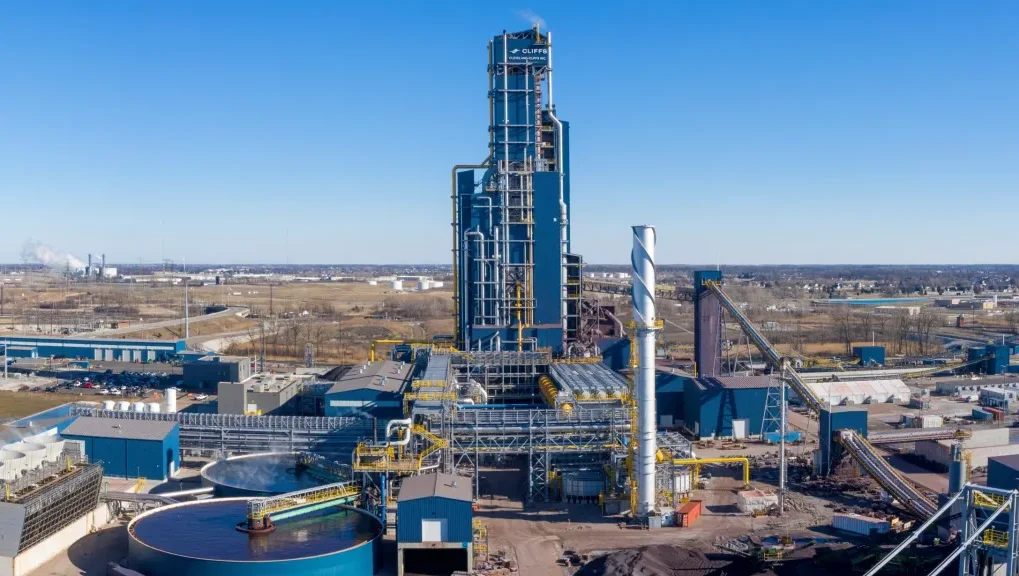
EMISSIONS: The top 25 U.S. oil and gas producers would’ve been liable for $1.1 billion in charges had the federal climate law’s methane emissions fee been applied over a year ending in March 2023, an analysis finds. (Grist)
ELECTRIC VEHICLES:
WIND:
POLITICS: Democrats fear the dismantling of Inflation Reduction Act clean energy incentives if they lose the presidency this fall. (New York Times)
NUCLEAR:
OIL & GAS:
CARBON CAPTURE: Alaska Gov. Mike Dunleavy proposes legislation that would allow the state to lease subsurface rights for storing carbon dioxide in an effort to maintain or increase fossil fuel production while reducing emissions. (Alaska Beacon)
CLIMATE: Washington state lawmakers propose spending carbon allowance auction revenues on electricity bill credits for low-income residents and to purchase hybrid-electric fire engines and charging infrastructure. (Washington State Standard)

EFFICIENCY: Policies to improve energy efficiency in housing have faced strong opposition from builders associations, who frequently deploy inflated cost estimates to fight code upgrades. (Washington Post)
CLEAN ENERGY: While U.S. investment in renewable energy reached record levels last year, a new report says the pace will need to accelerate to meet the country’s climate goals. (Canary Media)
POLLUTION: The Supreme Court will hear arguments today on a challenge to the Clean Air Act’s “good neighbor” provision, which aims to protect people from air pollution from other states. (NPR)
ELECTRIC VEHICLES:
SOLAR: A new report projects the U.S. will have installed 14 GW of community solar by 2028. (Solar Power World)
GRID:
CLIMATE: Chicago files a lawsuit accusing six oil companies and a major industry group of waging a campaign to discredit climate science and misleading the public about the dangers of fossil fuels. (E&E News)
CARBON CAPTURE: Montana advocates and residents push back against ExxonMobil’s proposed carbon sequestration project on 110,000 acres of federal land, citing potential impacts to wildlife, groundwater and livestock. (Independent Record)
MINING: The developer of a proposed lithium mine in Nevada struggles to work around environmental opposition and an endangered wildflower in its path. (Forbes)
PIPELINES: The Mountain Valley Pipeline announces yet another delay and cost increase, moving projected completion from March to June and raising the price tag to more than $7.5 billion. (Roanoke Times, WVTF)
COMMENTARY:

SOLAR: Texas accounts for more than a third of planned U.S. solar facilities and a significant chunk of battery projects this year as new solar and storage development is projected to shatter records. (S&P Global)
ALSO:
COAL ASH: The U.S. EPA warns Georgia regulators they’re likely allowing Georgia Power to store coal ash in ways that fall short of federal standards. (Atlanta Journal-Constitution)
NUCLEAR: The Tennessee Valley Authority plans to hire 330 people to conduct nuclear fusion energy research at a Tennessee coal-fired power plant that was closed late last year. (Chattanooga Times Free Press)
ELECTRIC VEHICLES:
OIL & GAS:
BIOFUELS: Florida lawmakers consider legislation written by a utility that would make it easier to develop manure-to-gas facilities and pass the cost to ratepayers. (Tampa Bay Times)
HYDROGEN:
CLIMATE: A Florida university receives a $9 million federal grant to build wells along the coast to determine how rising groundwater might destabilize thousands of buildings crowding the state’s coastline. (Miami Herald)
UTILITIES: Jurors hear testimony in the trial of two former executives of Jacksonville, Florida’s municipal utility who are accused of conspiracy and fraud. (Jacksonville Daily Record)
COMMENTARY: Virginia lawmakers consider creating a retail market for cannabis, which will almost certainly drive up power demand and carbon emissions, writes an editor. (Cardinal News)

OFFSHORE WIND: Federal interior officials approve the construction and operations plan for the two-part Empire Wind project slated to provide roughly 2 GW of electricity off the New York coast. (WorkBoat)
ALSO:
PIPELINES: A clean-up crew is back in Pennsylvania’s Marsh Creek State Park to contain a new leak related to the Mariner East pipeline developed by Energy Transfer, which has already paid over $4 million in environmental penalties. (WHYY)
PLANNING: As the Army Corps of Engineers solidifies plans for a $52.6 billion coastal flood protection project that would redesign significant swathes of New York City’s waterfront, a new federal report suggests the corps isn’t doing enough to factor climate change into such developments. (The City)
INCINERATION: Constant pulsation sounds from a Bristol, Connecticut, waste-to-energy facility and the unique acoustics of its valley location are causing complaints from dozens of local residents — and leading some to move away. (Hartford Courant, subscription)
UTILITIES:
ELECTRIC VEHICLES:
TRANSIT:
POLICY: New York’s environmental conservation commissioner is leaving the agency after over eight years holding the position and guiding the state through its climate goal setting. (Times Union)
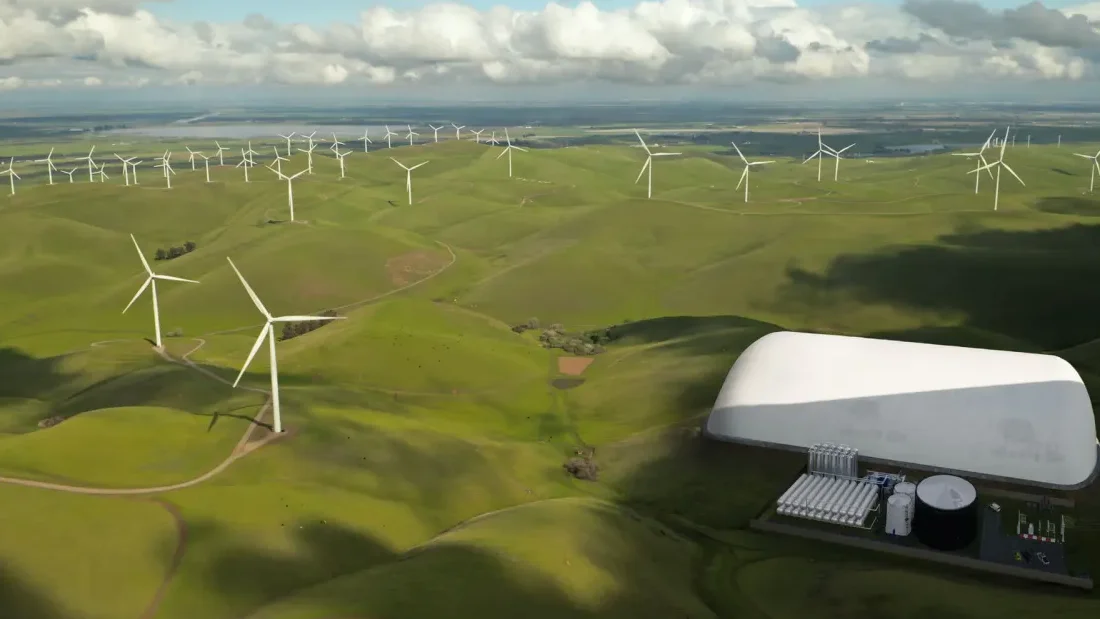
WIND: Vineyard Wind becomes the first large-scale offshore wind farm in the U.S. to begin delivering power, a step Massachusetts Gov. Maura Healey calls “a turning point in the clean energy transition.” (Associated Press)
ALSO: Federal interior officials approve the construction and operations plan for the two-part Empire Wind project slated to provide roughly 2 GW of electricity off the New York coast. (WorkBoat)
GRID: FERC seeks $27 million in penalties from a Texas company called “Ketchup Caddy” after finding it bid hundreds of megawatts of non-existent capacity into MISO markets. (Utility Dive)
ELECTRIC VEHICLES:
SOLAR:
POLLUTION: The EPA’s science advisors warn a proposed power plant emissions rule will not be aggressive enough to meet Paris Agreement climate targets. (E&E News, subscription)
OIL & GAS: The Mountain Valley Pipeline’s developers say they’ll purchase $150 million in carbon offsets to ensure the natural gas transmission project is “carbon neutral” during its first decade. (WV News)
BIOFUELS: The U.S. EPA issues a final rule to allow year-round sales of higher blends of corn-based ethanol in eight Midwestern states despite concerns that it could worsen smog during warm weather. (Associated Press)
UTILITIES: Ohio Gov. Mike DeWine defends a top adviser after a criminal indictment alleges she knew about millions of dollars FirstEnergy paid to Sam Randazzo before DeWine appointed him as the state’s top utility regulator. (Ohio Capital Journal)
GEOTHERMAL: A Chicago environmental justice organization is helping to build out a geothermal heating and cooling network on the city’s South Side. (Grist)
HYDROGEN: The CEO of North America’s largest flat-rolled steel company is betting on hydrogen to decarbonize its operations while also driving profits: “We are doing this to get paid, not to brag about it.” (E&E News)
COMMENTARY: A Harvard legal scholar says interregional transmission lines, which will be critical for reaching climate targets, are being held back by utilities protecting their profits. (IEEE Spectrum)
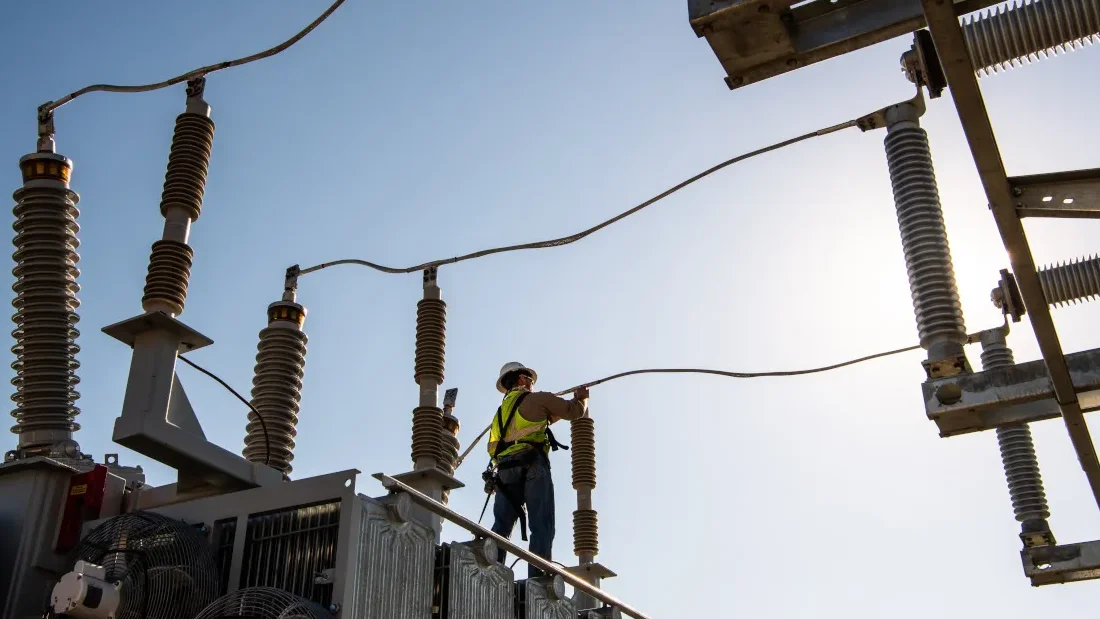
Big boxes of steel, iron, and mineral oil.
That’s how John Gajda, a long-time utility engineer and professor at North Carolina State University, describes the power transformers Siemens Energy plans to build in Charlotte.
The hunks of metal are named for their vital function: transforming the electricity produced at power plants to a voltage suitable for transmission, then transforming the voltage again for use in our homes and businesses.
“Transformers are the key technology that allow us to carry power over a distance,” Gajda said.
Central to the intricate network of cables, wires, and scaffolding seen at power substations, transformers have long played a critical — if not flashy — role in our electric grid.
“It’s maybe not the sexiest part of power generation,” said Richard Voorberg, president of Siemens Energy’s North America hub. “Everybody likes to talk about the generation side — big wind turbines or solar panels or nuclear plants. But this is one of those quiet backbone things that are necessary.”
Transformers come in all shapes and sizes, from the 200-ton version at a power plant switchyard to the small green box outside a home.
Siemens Energy plans to build the former, highly specialized pieces of equipment whose lead times have ballooned from about 18 months to up to five years, thanks to a global shortage.
One factor leading to more demand: large power transformers in this country are about 40 years old on average, according to the U.S. Department of Energy, and brushing up against their expiration dates.
“Some units in the grid are even more than 70 years old and still operating,” the agency says in a recent report. “Aging [large power transformers] cause higher failure risk.”
The worldwide push to electrify transportation and heat, combined with the transition to renewables from fossil fuels, has also created a surge in need.
“We need to build a lot more wind and solar,” said Luke O’Dea, vice president of engineering at Durham-based Cypress Creek Renewables, “and we need one or more of these transformers at every site where we want to build a new project.”
The U.S. Department of Energy says the country bought about 750 large power transformers in 2019. Three years from now, the figure will grow to 900, the agency predicts.
Compounding the problem, only about a fifth of U.S. large power transformers are produced domestically. Much of the rest are produced in Eastern Europe and Asia.
“We’ve got to be making these more in our country,” Voorberg said, “not only because of political instability in certain regions — but also plain old logistics issues.”
Siemens Energy’s new investment in North Carolina will help. The company will expand and refit its existing factory in Charlotte to produce 57 large power transformers and bring in another two dozen for service each year, adding 475 jobs. It will mark the energy giant’s first such facility in the United States.
To be sure, the transformers will serve the entire country, not just the Carolinas. But the equipment will be vital for Duke Energy, which is required by law to zero out its carbon emissions by midcentury, and is planning now for transmission upgrades required to interconnect more solar, wind, and battery storage.
“We’re building a lot of new substations,” said spokesperson Jeff Brooks. “That’s part of growing capacity on our system to support not only new business and industry, but also the dynamic power flows required to add more distributed technologies across the grid.”
Siemens Energy will also confront another challenge posed by the clean energy transition: Transporting renewable electricity hundreds of miles from where it’s readily produced to where it’s needed, such as from large wind farms in the Midwest or in the Atlantic Ocean to the populous East Coast.
“To transfer it that long distance, you need to convert it to DC,” said Voorberg, referring to direct current as opposed to alternating current. “Otherwise, you’re getting way too many losses going on.”
That’s why the company will add 84 jobs in Raleigh to design and test high-voltage DC transmission systems. “It’s more like a lab in Raleigh,” he said, “and a factory in Charlotte.”
North Carolina Gov. Roy Cooper, a second-term Democrat who has long championed the state’s clean energy economy, helped bring about the investment along with a host of government partners.
“Bringing production of these high voltage transformers onshore not only creates American jobs but makes our electric grid more resilient and ready for the transition to clean energy,” Cooper said in a statement.
Gajda, part of the Future Renewable Electric Energy Delivery and Management research center at N.C. State, certainly agrees. But when he saw the news, he said, he first viewed it through the lens of a professor.
“I can tell my students, ‘Hey, here’s another cool place where you can go to work,’” Gajda said. “I’m just excited about what it does for the energy ecosystem in North Carolina.”
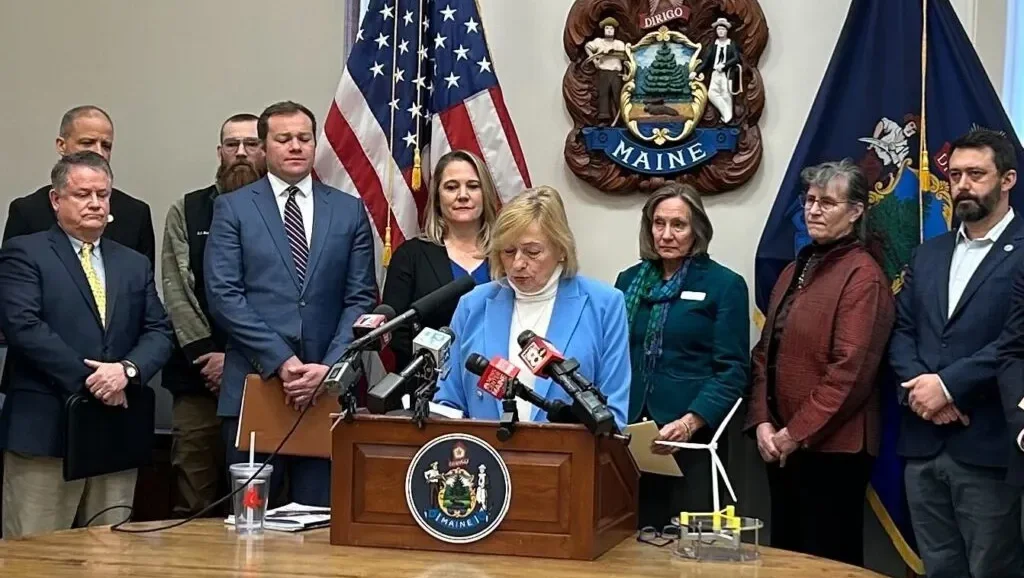
This article was originally published by the Maine Morning Star.
The International Energy Agency has estimated that offshore wind could generate $1 trillion in worldwide investments in the next 15 years.
Gov. Janet Mills said, “the time has come to bring some of that investment to Maine.”
Mills announced at a press conference Tuesday afternoon that Sears Island in Searsport is the preferred site for a designated port to support the state’s budding offshore wind industry because of its economic and environmental opportunities. The turbines will be fabricated and assembled at the dedicated port.
Within Searsport, there were two potential locations: Sears Island and Mack Point. Both are in Penobscot Bay and have garnered conflicting reactions from the public. Since Sears Island is undeveloped, proponents see it as a blank canvas ready to be transformed into an offshore wind port. But opponents argued against clearing more natural land over the redevelopment of Mack Point.
Mills laid out half a dozen reasons why she believes the 941-acre Sears Island is the best choice financially and environmentally for the people of Maine, although she emphasized that she didn’t make the decision lightly.
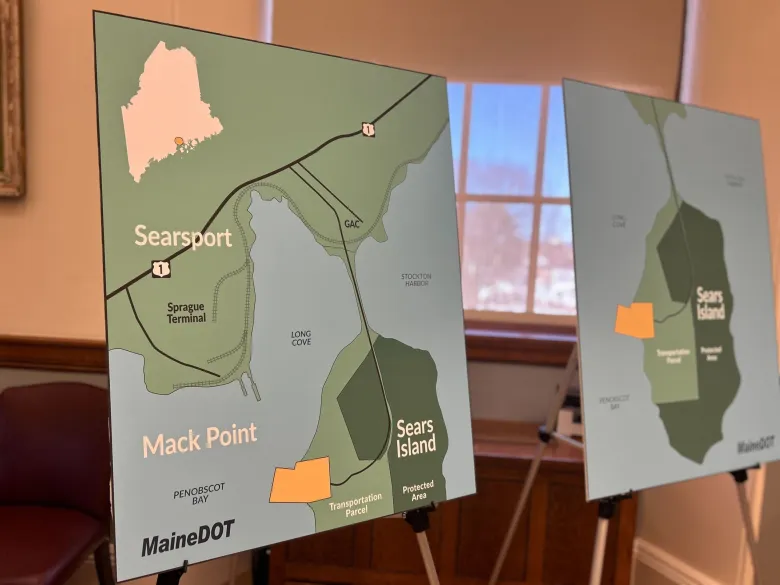
Since the state already owns the land, it will minimize upfront costs and eliminate the potential for leasing, making Sears Island more cost-effective in the short- and long-run, Mills said. She didn’t provide an exact number, but Mills said the entire project could ultimately cost several hundreds of millions of dollars.
The island also has the required physical characteristics, namely a large, level surface with access to deep water.
Knowing that some people may be unhappy about the decision, Mills said she has hiked the island and circumnavigated it by boat so she understands the appreciation for the island. In 2009, the state put about 600 acres — two-thirds of the island — into a permanent easement. That portion will remain untouched by the port, which will be built on about 100 acres outside of the protected area.
Searsport and the surrounding region has faced economic challenges in the past decade after a paper mill closed and took more than 500 jobs with it.
“We have not recovered from that loss,” said James Gillway, town manager of Searsport. “Offshore wind will change that.”
Representatives from Maine State Chamber of Commerce, Maine Conservation Voters and Maine Audubon were also present at the press conference in support of the announcement. Sen. Chip Curry (D-Waldo) also spoke about the opportunities this will offer by creating a new industry to “strengthen families up and down the Midcoast” with good-paying jobs.
“Offshore wind will be essential to our transition away from expensive and dirty fossil fuels, and to realize this incredible opportunity, we need port infrastructure,” said Beth Ahearn, director of government affairs for Maine Conservation Voters, who was also part of the 19-member Offshore Wind Port Advisory Group.
Organized by the Maine Department of Transportation, the advisory group met six times between 2022 and 2023 to explore prospective sites and help inform the governor’s decision.
Maine relies on natural gas to support much of its energy needs, so diversifying power sources can help stabilize prices for ratepayers, said Dan Burgess, director of the Governor’s Energy Office.
“This is an investment in Maine-made, clean energy that we think will stabilize rates,” Burgess said of offshore wind. He added, “the more we can do homegrown, the better.”
In a statement, Sean Mahoney, vice president of the Conservation Law Foundation Maine, which was also part of the advisory group, said, “Offshore wind will grow our economy and help us meet our obligations to ditch polluting fossil fuels. It’s critical that this process is now moving forward and we’re one step closer to getting this clean energy on the grid.”
In November, a coalition of organized labor and environmental groups voiced support for building a new port for offshore wind, highlighting benefits such as job-creation and the use of innovation developed by Maine people. They also stressed the urgency of moving forward with the project for environmental reasons.
The state is still waiting for the federal Bureau of Ocean Energy Management to publish a final map showing where offshore wind can be developed in the Gulf of Maine.
In the meantime, Maine DOT will begin applying for state and federal permits. That process is expected to take about a year. Construction, however, will take multiple years. Mills estimated it could wrap up in 2029.
Even before the governor’s decision, Searsport stood out among the other options.
While the water is plenty deep, there isn’t enough space in Portland, so it wasn’t a viable option, explained Kathleen Meil, senior director of policy and partnerships for Maine Conservation Voters.
Eastport, another potential location, would require going through Tribal land and has a lot of rock, granite and other materials that would need to be blasted.
“So, that leaves us with Searsport,” Meil said in an interview with Maine Morning Star last week.

OFFSHORE WIND: Eversource Energy says it will sell its stake in the South Fork and Revolution wind projects to Global Infrastructure Partners for $1.1 billion as it posts a fourth-quarter loss. (Reuters)
ALSO: A nonprofit business program selects nine Maryland companies aiming to enter or expand in the domestic offshore wind industry for free consulting and project development services. (news release)
TRANSIT: Boston’s city council may consider a traffic congestion pricing plan similar to that of New York City to improve air quality and support public transit use. (Boston Herald)
FOSSIL FUELS:
GRID:
BUILDINGS:
ELECTRIC VEHICLES: Vermont Electric Cooperative begins tracking how many electric vehicles are plugged in to charge overnight and manages their charging times to prevent grid overload but still fulfill demand. (WCAX)
SOLAR: A central Maine town’s board sends solar-related zoning recommendations to its city council centered around wetlands protection and when it’s appropriate to rezone land for solar. (Morning Sentinel)
NUCLEAR: The chair of the federal Nuclear Regulatory Commission tours the Oswego, New York, nuclear plant and says nuclear power is critical for the state to reach its clean power goals. (Spectrum News 1)
CLIMATE: The future of some traditional New England sports like pond hockey are threatened by the milder winters and thinner ice coverage associated with climate change. (Associated Press)